Patrologiae Cursus Completus: Series Latina (221 vols.)
Digital Logos Edition
This product has been transferred from Community Pricing to Pre-Pub. The actual funding level may be lower than it appears, which could delay production. The amount of funding still needed will be evaluated and updated soon.
Overview
Jacques Paul Migne’s Patrologiae Cursus Completus: Series Latina forms the largest collection ever published of the extant writings of the Latin Fathers and Doctors of the early and medieval Church. It served as the translation base for Philip Schaff’s Early Church Fathers and has been the bedrock for theological and historical studies of the time period extending from Tertullian in AD 200 to Pope Innocent III in AD 1216.
Between 1844 and 1864, the abbé Jacques Paul Migne, an industrious French priest, published the 221 volumes that make up the Patrologiae Cursus Completus: Series Latina, roughly translated “Complete Course on Patrology, Latin Series,” and commonly referred to as “Patrologia Latina” (PL). These volumes contain much of the available witness in Latin to the writings of the Fathers and Doctors of the early and medieval Church. Each volume of the Patrologia Latina contains not only the Latin editions, but also lengthy dissertations, introductions, critical apparatuses, and other supplementary material written in Latin.
The 38-volume edition of the Early Church Fathers, edited by Philip Schaff, used many of the Patrologia Latina volumes as its translation base, but the Patrologia Latina contains many works of the Church Fathers not translated by Schaff and not available in English. With the Patrologia Latina, you can read and research valuable but difficult-to-find works, like the important writings by Radbertus and Ratramnus in the ninth century on the Eucharist, which contain the earliest debate on the doctrine of transubstantiation and provide a window into this doctrine's emergence and development.
For those who have the Logos editions of Schaff’s Early Church Fathers, the Patrologia Latina encodes links to the material in common, allowing access to an English translation. More importantly, for those wanting to read the texts translated by Schaff in their original language, the Patrologia Latina is a must.
These volumes are not facsimile editions of page-scans; they are full-blown, full-text Logos resources. Search, for example, for every occurrence of the word “filioque” to trace the important debate surrounding the procession of the Holy Spirit from the Son, which contributed to the Great Schism of 1054 between the Eastern and Western Churches. Search for “facienti quod en se est” to look for discussions on Franciscan pactum theology, which was so important for the controversies surrounding the Reformation era. (Morphological tagging may be added later depending on interest.) Each volume of the Patrologia Latina is navigable by page number or column number (the primary method of citation of the Patrologia Latina), linked to many Logos books, and indexed by author and work. Further detail (chapter, section, verse) will depend upon each work itself and reflect the divisions marked by Migne.
Be sure to also get Migne’s monumental work on the Greek Fathers, the Patrologiae Cursus Completus: Series Graeca (167 vols.). And to round out your collection of the church Fathers in their original languages, don’t forget the Patrologia Syriaca (vols. 1-2) and Orientalis (vols. 1-14, 16) which contains the Arabic, Armenian, Coptic, Ethiopic, Greek, Georgian, Slavonic, and Syriac writings of the Fathers of the Eastern Church.
- The most exhaustive collection of writings from the Latin Fathers and doctors of the Church
- Around 150,000 pages of primary source documents in their original language
- Introductions, discourses, and critical apparatuses for the Latin Fathers
- Extensive four-volume index of authors, works, dates, and subjects
- Rare access to the most important reference work for the Latin Fathers
- Links to other Logos books, including the English translations found in Philip Schaff’s Early Church Fathers
A new era was initiated in the 19th century by the Frenchman J.-P. Migne (1800–1875), who was the first to publish all the works of the church fathers according to the best available editions. His Patrologia latina appeared in 221 volumes (1844–64), and, with Latin translations, his Patrologia graeca in 161 volumes (1857–66) . . . scholars all over the world continue to depend on them . . .
—The Encyclopedia of Christianity, vol. 4, by Erwin Fahlbusch and Geoffrey William Bromiley
Students should be especially alert to the value of both the contents of and the indices to the major series edited by Jacques-Paul Migne, the Patrologia Latina and the Patrologia Graeca.
—Church History: An Introduction to Research, Reference Works, and Methods, by James E. Bradley and Richard A. Muller
The most complete collection of patristic texts, which needs to be consulted when no critical text is available . . .
—A Basic Bibliographic Guide for New Testament Exegesis, by David M. Scholer
. . . the two Patrologia remain the standard edition for much of the religious Latin and Greek literature of the patristic and medieval periods.
—A Global Encyclopedia of Historical Writing, vol. 2, by D. R. Woolf
Not only does it usually give the best texts which were available at the time of its publication, but it adds to them a store of notes, introductions, and dissertations by well-known Patristic scholars. The Latin series is furnished with four volumes of useful indices.
—Patristic Study, by Henry Barclay Swete
. . . PG and PL are still the standard means of reference and citation for most patristic authors.
—The Modern Catholic Encyclopedia, Rev. and expanded ed., by Michael Glazier and Monika K. Hellwig
- Title: Patrologiae Cursus Completus: Series Latina
- Editor: Jaques Paul Migne
- Volumes: 221
- Pages: Approximately 150,000
- Patrologia Latina, vol. 1
- Patrologia Latina, vol. 2
- Patrologia Latina, vol. 3
- Patrologia Latina, vol. 4
- Patrologia Latina, vol. 5
- Patrologia Latina, vol. 6
- Patrologia Latina, vol. 7
- Patrologia Latina, vol. 8
- Patrologia Latina, vol. 9
- Patrologia Latina, vol. 10
- Patrologia Latina, vol. 11
- Patrologia Latina, vol. 12
- Patrologia Latina, vol. 13
- Patrologia Latina, vol. 14
- Patrologia Latina, vol. 15
- Patrologia Latina, vol. 16
- Patrologia Latina, vol. 17
- Patrologia Latina, vol. 18
- Patrologia Latina, vol. 19
- Patrologia Latina, vol. 20
- Patrologia Latina, vol. 21
- Patrologia Latina, vol. 22
- Patrologia Latina, vol. 23
- Patrologia Latina, vol. 24
- Patrologia Latina, vol. 25
- Patrologia Latina, vol. 26
- Patrologia Latina, vol. 27
- Patrologia Latina, vol. 28
- Patrologia Latina, vol. 29
- Patrologia Latina, vol. 30
- Patrologia Latina, vol. 31
- Patrologia Latina, vol. 32
- Patrologia Latina, vol. 33
- Patrologia Latina, vol. 34
- Patrologia Latina, vol. 35
- Patrologia Latina, vol. 36
- Patrologia Latina, vol. 37
- Patrologia Latina, vol. 38
- Patrologia Latina, vol. 39
- Patrologia Latina, vol. 40
- Patrologia Latina, vol. 41
- Patrologia Latina, vol. 42
- Patrologia Latina, vol. 43
- Patrologia Latina, vol. 44
- Patrologia Latina, vol. 45
- Patrologia Latina, vol. 46
- Patrologia Latina, vol. 47
- Patrologia Latina, vol. 48
- Patrologia Latina, vol. 49
- Patrologia Latina, vol. 50
- Patrologia Latina, vol. 51
- Patrologia Latina, vol. 52
- Patrologia Latina, vol. 53
- Patrologia Latina, vol. 54
- Patrologia Latina, vol. 55
- Patrologia Latina, vol. 56
- Patrologia Latina, vol. 57
- Patrologia Latina, vol. 58
- Patrologia Latina, vol. 59
- Patrologia Latina, vol. 60
- Patrologia Latina, vol. 61
- Patrologia Latina, vol. 62
- Patrologia Latina, vol. 63
- Patrologia Latina, vol. 64
- Patrologia Latina, vol. 65
- Patrologia Latina, vol. 66
- Patrologia Latina, vol. 67
- Patrologia Latina, vol. 68
- Patrologia Latina, vol. 69
- Patrologia Latina, vol. 70
- Patrologia Latina, vol. 71
- Patrologia Latina, vol. 72
- Patrologia Latina, vol. 73
- Patrologia Latina, vol. 74
- Patrologia Latina, vol. 75
- Patrologia Latina, vol. 76
- Patrologia Latina, vol. 77
- Patrologia Latina, vol. 78
- Patrologia Latina, vol. 79
- Patrologia Latina, vol. 80
- Patrologia Latina, vol. 81
- Patrologia Latina, vol. 82
- Patrologia Latina, vol. 83
- Patrologia Latina, vol. 84
- Patrologia Latina, vol. 85
- Patrologia Latina, vol. 86
- Patrologia Latina, vol. 87
- Patrologia Latina, vol. 88
- Patrologia Latina, vol. 89
- Patrologia Latina, vol. 90
- Patrologia Latina, vol. 91
- Patrologia Latina, vol. 92
- Patrologia Latina, vol. 93
- Patrologia Latina, vol. 94
- Patrologia Latina, vol. 95
- Patrologia Latina, vol. 96
- Patrologia Latina, vol. 97
- Patrologia Latina, vol. 98
- Patrologia Latina, vol. 99
- Patrologia Latina, vol. 100
- Patrologia Latina, vol. 101
- Patrologia Latina, vol. 102
- Patrologia Latina, vol. 103
- Patrologia Latina, vol. 104
- Patrologia Latina, vol. 105
- Patrologia Latina, vol. 106
- Patrologia Latina, vol. 107
- Patrologia Latina, vol. 108
- Patrologia Latina, vol. 109
- Patrologia Latina, vol. 110
- Patrologia Latina, vol. 111
- Patrologia Latina, vol. 112
- Patrologia Latina, vol. 113
- Patrologia Latina, vol. 114
- Patrologia Latina, vol. 115
- Patrologia Latina, vol. 116
- Patrologia Latina, vol. 117
- Patrologia Latina, vol. 118
- Patrologia Latina, vol. 119
- Patrologia Latina, vol. 120
- Patrologia Latina, vol. 121
- Patrologia Latina, vol. 122
- Patrologia Latina, vol. 123
- Patrologia Latina, vol. 124
- Patrologia Latina, vol. 125
- Patrologia Latina, vol. 126
- Patrologia Latina, vol. 127
- Patrologia Latina, vol. 128
- Patrologia Latina, vol. 129
- Patrologia Latina, vol. 130
- Patrologia Latina, vol. 131
- Patrologia Latina, vol. 132
- Patrologia Latina, vol. 133
- Patrologia Latina, vol. 134
- Patrologia Latina, vol. 135
- Patrologia Latina, vol. 136
- Patrologia Latina, vol. 137
- Patrologia Latina, vol. 138
- Patrologia Latina, vol. 139
- Patrologia Latina, vol. 140
- Patrologia Latina, vol. 141
- Patrologia Latina, vol. 142
- Patrologia Latina, vol. 143
- Patrologia Latina, vol. 144
- Patrologia Latina, vol. 145
- Patrologia Latina, vol. 146
- Patrologia Latina, vol. 147
- Patrologia Latina, vol. 148
- Patrologia Latina, vol. 149
- Patrologia Latina, vol. 150
- Patrologia Latina, vol. 151
- Patrologia Latina, vol. 152
- Patrologia Latina, vol. 153
- Patrologia Latina, vol. 154
- Patrologia Latina, vol. 155
- Patrologia Latina, vol. 156
- Patrologia Latina, vol. 157
- Patrologia Latina, vol. 158
- Patrologia Latina, vol. 159
- Patrologia Latina, vol. 160
- Patrologia Latina, vol. 161
- Patrologia Latina, vol. 162
- Patrologia Latina, vol. 163
- Patrologia Latina, vol. 164
- Patrologia Latina, vol. 165
- Patrologia Latina, vol. 166
- Patrologia Latina, vol. 167
- Patrologia Latina, vol. 168
- Patrologia Latina, vol. 169
- Patrologia Latina, vol. 170
- Patrologia Latina, vol. 171
- Patrologia Latina, vol. 172
- Patrologia Latina, vol. 173
- Patrologia Latina, vol. 174
- Patrologia Latina, vol. 175
- Patrologia Latina, vol. 176
- Patrologia Latina, vol. 177
- Patrologia Latina, vol. 178
- Patrologia Latina, vol. 179
- Patrologia Latina, vol. 180
- Patrologia Latina, vol. 181
- Patrologia Latina, vol. 182
- Patrologia Latina, vol. 183
- Patrologia Latina, vol. 184
- Patrologia Latina, vol. 185
- Patrologia Latina, vol. 186
- Patrologia Latina, vol. 187
- Patrologia Latina, vol. 188
- Patrologia Latina, vol. 189
- Patrologia Latina, vol. 190
- Patrologia Latina, vol. 191
- Patrologia Latina, vol. 192
- Patrologia Latina, vol. 193
- Patrologia Latina, vol. 194
- Patrologia Latina, vol. 195
- Patrologia Latina, vol. 196
- Patrologia Latina, vol. 197
- Patrologia Latina, vol. 198
- Patrologia Latina, vol. 199
- Patrologia Latina, vol. 200
- Patrologia Latina, vol. 201
- Patrologia Latina, vol. 202
- Patrologia Latina, vol. 203
- Patrologia Latina, vol. 204
- Patrologia Latina, vol. 205
- Patrologia Latina, vol. 206
- Patrologia Latina, vol. 207
- Patrologia Latina, vol. 208
- Patrologia Latina, vol. 209
- Patrologia Latina, vol. 210
- Patrologia Latina, vol. 211
- Patrologia Latina, vol. 212
- Patrologia Latina, vol. 213
- Patrologia Latina, vol. 214
- Patrologia Latina, vol. 215
- Patrologia Latina, vol. 216
- Patrologia Latina, vol. 217
- Patrologia Latina, vol. 218
- Patrologia Latina, vol. 219
- Patrologia Latina, vol. 220
- Patrologia Latina, vol. 221
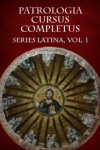
Patrologia Latina, vol. 1
- Editor: Jacques Paul Migne
- Series: Patrologiae Cursus Completus: Series Latina
Authors include*:
- Tertullianus
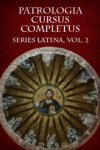
Patrologia Latina, vol. 2
- Editor: Jacques Paul Migne
- Series: Patrologiae Cursus Completus: Series Latina
Authors include*:
- Tertullianus
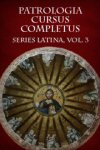
Patrologia Latina, vol. 3
- Editor: Jacques Paul Migne
- Series: Patrologiae Cursus Completus: Series Latina
Authors include*:
- Tertulliani
- Minucii Felicis
- Celerini
- Luciani
- Caldonii
- Moysis
- Maximi
- Nicostrati
- Rufini
- Urbani
- Sidonii
- Macarii
- S. Cornelii Papae et Mart.
- S. Cypriani
- Novatiani
- Dionysii alex.
- SS. Lucii et Stephani PP. et Mart.
- Firmiliani
- S. Pontii
- Necnon anonymorum auctorum
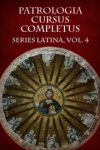
Patrologia Latina, vol. 4
- Editor: Jacques Paul Migne
- Series: Patrologiae Cursus Completus: Series Latina
Authors include*:
- S. Cypriani
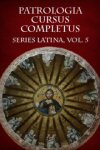
Patrologia Latina, vol. 5
- Editor: Jacques Paul Migne
- Series: Patrologiae Cursus Completus: Series Latina
Authors include*:
- Sixti Papae
- Dionysii Papae
- Dionysii Alexandrini
- S. Felicis
- S. Euthychiani
- Caii
- Commodiani
- Antonii
- S. Victorini
- Magnetis
- Arnobii
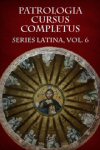
Patrologia Latina, vol. 6
- Editor: Jacques Paul Migne
- Series: Patrologiae Cursus Completus: Series Latina
Authors include*:
- Marcellini
- Marcelli
- Eusebii
- Melchiadis
- Anonymi
- Celsi
- Lactantii
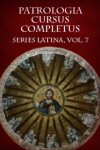
Patrologia Latina, vol. 7
- Editor: Jacques Paul Migne
- Series: Patrologiae Cursus Completus: Series Latina
Authors include*:
- Lactantii
- Marcellini
- Marcelli
- Eusebii
- Melchiadis
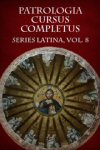
Patrologia Latina, vol. 8
- Editor: Jacques Paul Migne
- Series: Patrologiae Cursus Completus: Series Latina
Authors include*:
- Constantini Magni
- Nazarii
- Anonymi
- S. Silvestri Papae
- S. Marci Papae
- S. Julii Papae
- Osii Cordubensis
- Victorini
- Candidi Ariani
- Liberii Papae
- Potamii
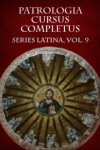
Patrologia Latina, vol. 9
- Editor: Jacques Paul Migne
- Series: Patrologiae Cursus Completus: Series Latina
Authors include*:
- S. Hilarii
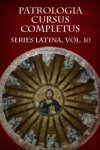
Patrologia Latina, vol. 10
- Editor: Jacques Paul Migne
- Series: Patrologiae Cursus Completus: Series Latina
Authors include*:
- S. Hilarii
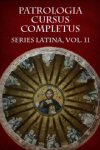
Patrologia Latina, vol. 11
- Editor: Jacques Paul Migne
- Series: Patrologiae Cursus Completus: Series Latina
Authors include*:
- S. S. Zenonis
- Optati
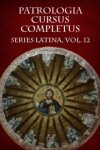
Patrologia Latina, vol. 12
- Editor: Jacques Paul Migne
- Series: Patrologiae Cursus Completus: Series Latina
Authors include*:
- S. Eusebii Vercellensis
- Firmici Materni
- S. Philastrii
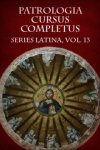
Patrologia Latina, vol. 13
- Editor: Jacques Paul Migne
- Series: Patrologiae Cursus Completus: Series Latina
Authors include*:
- S. Felicis II, Papae
- Faustini
- Marcellini
- S. Damasi, Papae
- Theodosii Magni
- Pacati
- Filocali
- Sylvii
- S. Vigilii Tridentini
- Luciferi Calaritani
- S. Paciani
- Hilariani
- S. Siricii, Papae
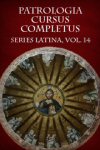
Patrologia Latina, vol. 14
- Editor: Jacques Paul Migne
- Series: Patrologiae Cursus Completus: Series Latina
Authors include*:
- S. Ambrosii
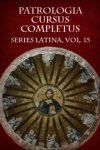
Patrologia Latina, vol. 15
- Editor: Jacques Paul Migne
- Series: Patrologiae Cursus Completus: Series Latina
Authors include*:
- S. Ambrosii
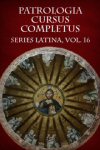
Patrologia Latina, vol. 16
- Editor: Jacques Paul Migne
- Series: Patrologiae Cursus Completus: Series Latina
Authors include*:
- S. Ambrosii
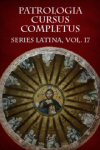
Patrologia Latina, vol. 17
- Editor: Jacques Paul Migne
- Series: Patrologiae Cursus Completus: Series Latina
Authors include*:
- S. Ambrosii
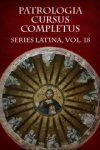
Patrologia Latina, vol. 18
- Editor: Jacques Paul Migne
- Series: Patrologiae Cursus Completus: Series Latina
Authors include*:
- S. Martinus Turonensis
- Tichonius
- Hilarius Diaconus
- Novatus Catholicus
- Auctor Incertus
- Aurelius Symmachus
- Maximus Grammaticus
- Mamertinus
- Publius Victor
- Ulfilas
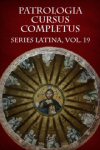
Patrologia Latina, vol. 19
- Editor: Jacques Paul Migne
- Series: Patrologiae Cursus Completus: Series Latina
Authors include*:
- Juvenci
- Optatiani
- Sedulii
- Severi Rhetoris
- Faltoniae
- Ausonii
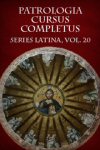
Patrologia Latina, vol. 20
- Editor: Jacques Paul Migne
- Series: Patrologiae Cursus Completus: Series Latina
Authors include*:
- S. Phoebadii
- S. Anastasii I, Papae
- Fausti Manichaei
- Sulpicii Severi
- Secundini Manichaei
- S. Chromatii
- S. Victricii Rhotomagensis
- Pammachii
- Oceani
- S. Innocentii I, Papae
- S. Zosimi, Papae
- Paulini Mediolanensis
- Paulini Diaconi
- Severi Majoricensis
- S. Bonifacii I, Papae
- S. Gaudentii Brixiani
- S. Aurelii Carthaginensis
- Bachiarii Monachi
- Zacchaei Christiani
- Evagrii Monachi
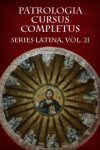
Patrologia Latina, vol. 21
- Editor: Jacques Paul Migne
- Series: Patrologiae Cursus Completus: Series Latina
Authors include*:
- Rufini
- Pelagii
- Coelestii
- Juliani
- Aniani
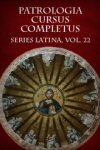
Patrologia Latina, vol. 22
- Editor: Jacques Paul Migne
- Series: Patrologiae Cursus Completus: Series Latina
Authors include*:
- S. Hieronymi (Jerome)
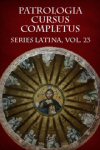
Patrologia Latina, vol. 23
- Editor: Jacques Paul Migne
- Series: Patrologiae Cursus Completus: Series Latina
Authors include*:
- S. Hieronymi (Jerome)
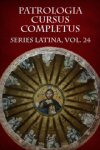
Patrologia Latina, vol. 24
- Editor: Jacques Paul Migne
- Series: Patrologiae Cursus Completus: Series Latina
Authors include*:
- S. Hieronymi (Jerome)
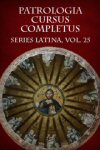
Patrologia Latina, vol. 25
- Editor: Jacques Paul Migne
- Series: Patrologiae Cursus Completus: Series Latina
Authors include*:
- S. Hieronymi (Jerome)
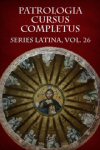
Patrologia Latina, vol. 26
- Editor: Jacques Paul Migne
- Series: Patrologiae Cursus Completus: Series Latina
Authors include*:
- S. Hieronymi (Jerome)
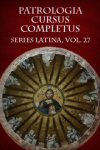
Patrologia Latina, vol. 27
- Editor: Jacques Paul Migne
- Series: Patrologiae Cursus Completus: Series Latina
Authors include*:
- S. Hieronymi (Jerome)
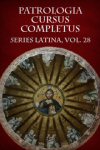
Patrologia Latina, vol. 28
- Editor: Jacques Paul Migne
- Series: Patrologiae Cursus Completus: Series Latina
Authors include*:
- S. Hieronymi (Jerome)
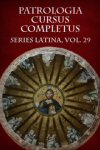
Patrologia Latina, vol. 29
- Editor: Jacques Paul Migne
- Series: Patrologiae Cursus Completus: Series Latina
Authors include*:
- S. Hieronymi (Jerome)

Patrologia Latina, vol. 30
- Editor: Jacques Paul Migne
- Series: Patrologiae Cursus Completus: Series Latina
Authors include*:
- S. Hieronymi (Jerome)
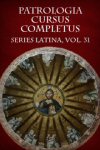
Patrologia Latina, vol. 31
- Editor: Jacques Paul Migne
- Series: Patrologiae Cursus Completus: Series Latina
Authors include*:
- Fl. Lucii Dextri
- Pauli Orosii
- Leporii Presbyteri
- Evodii
- Scriptorum Quorumdam S. Augustino Aequalium
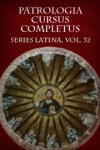
Patrologia Latina, vol. 32
- Editor: Jacques Paul Migne
- Series: Patrologiae Cursus Completus: Series Latina
Authors include*:
- S. Aurelii Augustini
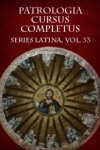
Patrologia Latina, vol. 33
- Editor: Jacques Paul Migne
- Series: Patrologiae Cursus Completus: Series Latina
Authors include*:
- S. Aurelii Augustini
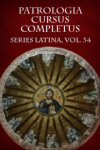
Patrologia Latina, vol. 34
- Editor: Jacques Paul Migne
- Series: Patrologiae Cursus Completus: Series Latina
Authors include*:
- S. Aurelii Augustini
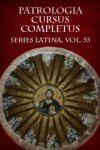
Patrologia Latina, vol. 35
- Editor: Jacques Paul Migne
- Series: Patrologiae Cursus Completus: Series Latina
Authors include*:
- S. Aurelii Augustini
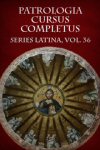
Patrologia Latina, vol. 36
- Editor: Jacques Paul Migne
- Series: Patrologiae Cursus Completus: Series Latina
Authors include*:
- S. Aurelii Augustini
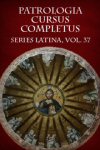
Patrologia Latina, vol. 37
- Editor: Jacques Paul Migne
- Series: Patrologiae Cursus Completus: Series Latina
Authors include*:
- S. Aurelii Augustini
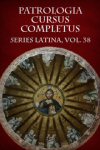
Patrologia Latina, vol. 38
- Editor: Jacques Paul Migne
- Series: Patrologiae Cursus Completus: Series Latina
Authors include*:
- S. Aurelii Augustini
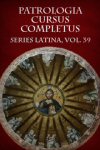
Patrologia Latina, vol. 39
- Editor: Jacques Paul Migne
- Series: Patrologiae Cursus Completus: Series Latina
Authors include*:
- S. Aurelii Augustini
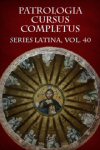
Patrologia Latina, vol. 40
- Editor: Jacques Paul Migne
- Series: Patrologiae Cursus Completus: Series Latina
Authors include*:
- S. Aurelii Augustini
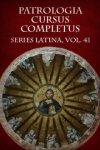
Patrologia Latina, vol. 41
- Editor: Jacques Paul Migne
- Series: Patrologiae Cursus Completus: Series Latina
Authors include*:
- S. Aurelii Augustini
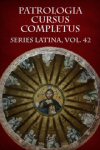
Patrologia Latina, vol. 42
- Editor: Jacques Paul Migne
- Series: Patrologiae Cursus Completus: Series Latina
Authors include*:
- S. Aurelii Augustini
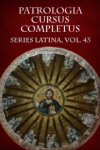
Patrologia Latina, vol. 43
- Editor: Jacques Paul Migne
- Series: Patrologiae Cursus Completus: Series Latina
Authors include*:
- S. Aurelii Augustini
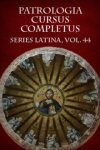
Patrologia Latina, vol. 44
- Editor: Jacques Paul Migne
- Series: Patrologiae Cursus Completus: Series Latina
Authors include*:
- S. Aurelii Augustini
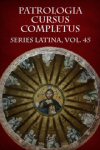
Patrologia Latina, vol. 45
- Editor: Jacques Paul Migne
- Series: Patrologiae Cursus Completus: Series Latina
Authors include*:
- S. Aurelii Augustini
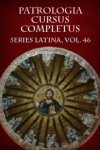
Patrologia Latina, vol. 46
- Editor: Jacques Paul Migne
- Series: Patrologiae Cursus Completus: Series Latina
Authors include*:
- S. Aurelii Augustini
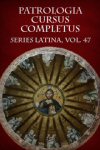
Patrologia Latina, vol. 47
- Editor: Jacques Paul Migne
- Series: Patrologiae Cursus Completus: Series Latina
Authors include*:
- S. Aurelii Augustini
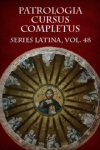
Patrologia Latina, vol. 48
- Editor: Jacques Paul Migne
- Series: Patrologiae Cursus Completus: Series Latina
Authors include*:
- Marii Mercatoris
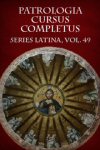
Patrologia Latina, vol. 49
- Editor: Jacques Paul Migne
- Series: Patrologiae Cursus Completus: Series Latina
Authors include*:
- Joannis Cassiani
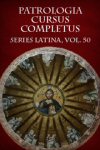
Patrologia Latina, vol. 50
- Editor: Jacques Paul Migne
- Series: Patrologiae Cursus Completus: Series Latina
Authors include*:
- Cassianus
- Vigilius Diaconus
- Fastidius
- Possidius
- S. Coelestinus I, Papa
- Antoninus Honoratus
- S. Xystus III, Papa
- S. Vincentius Iirinensis
- S. Eucherius
- S. Hilarius Arelatensis
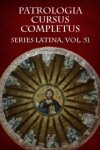
Patrologia Latina, vol. 51
- Editor: Jacques Paul Migne
- Series: Patrologiae Cursus Completus: Series Latina
Authors include*:
- S. Prosperii Aquitani
- Idacii Aquaeflaviensis Episcopi
- Marcellini Comitis

Patrologia Latina, vol. 52
- Editor: Jacques Paul Migne
- Series: Patrologiae Cursus Completus: Series Latina
Authors include*:
- SS. Petri Chrysologi
- Valeriani et Nicetae
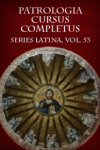
Patrologia Latina, vol. 53
- Editor: Jacques Paul Migne
- Series: Patrologiae Cursus Completus: Series Latina
Authors include*:
- Salviani Massiliensis
- Arnobii Junioris
- Anonymi
- Mamerti Claudiani
- S. Patricii
- Capreoli
- Uranii
- Eustathii S. Basili Interpretis
- Polemei Sylvii
- Philippi Presbyteri
- Leonis Bituricensis

Patrologia Latina, vol. 54
- Editor: Jacques Paul Migne
- Series: Patrologiae Cursus Completus: Series Latina
Authors include*:
- S. Leonis Magni
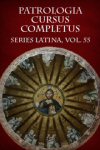
Patrologia Latina, vol. 55
- Editor: Jacques Paul Migne
- Series: Patrologiae Cursus Completus: Series Latina
Authors include*:
- S. Leonis Magni

Patrologia Latina, vol. 56
- Editor: Jacques Paul Migne
- Series: Patrologiae Cursus Completus: Series Latina
Authors include*:
- S. Leonis Magni
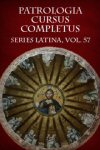
Patrologia Latina, vol. 57
- Editor: Jacques Paul Migne
- Series: Patrologiae Cursus Completus: Series Latina
Authors include*:
- S. Maximi Taurinensis
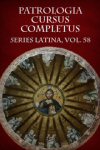
Patrologia Latina, vol. 58
- Editor: Jacques Paul Migne
- Series: Patrologiae Cursus Completus: Series Latina
Authors include*:
- Hilari, Papae
- S. Simplicii, Papae
- S. Lupi trecensis
- S. Euphronii Eduensis
- Ruricii Lemovicensis
- Victoris Vitensis
- Sidonii Apollinaris
- S. Perpetui Turon.
- Cerealis
- S. Eugenii Carthaginensis
- Fausti Rhegiensis
- S. Felicis III
- Gennadii Massiliensis
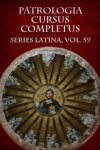
Patrologia Latina, vol. 59
- Editor: Jacques Paul Migne
- Series: Patrologiae Cursus Completus: Series Latina
Authors include*:
- S. Gelasius, Papa
- S. Avitus
- S. Faustinus
- Joannes Diaconus
- Julianus Pomerius
- Duo Anonymi
- Aurelius Prudentius
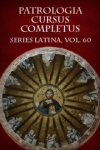
Patrologia Latina, vol. 60
- Editor: Jacques Paul Migne
- Series: Patrologiae Cursus Completus: Series Latina
Authors include*:
- Prudentii
- Dracontii
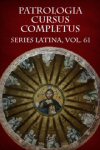
Patrologia Latina, vol. 61
- Editor: Jacques Paul Migne
- Series: Patrologiae Cursus Completus: Series Latina
Authors include*:
- S. Paulinus Nolanus
- Claudius Marius Victor
- Merobaudes Scholasticus
- S. Orientius
- S. Auspicius
- Paulinus Petricordiensis
- Amoenus
- Secundinus
- Drepanius Florus
- Auctor Incertus
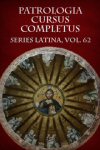
Patrologia Latina, vol. 62
- Editor: Jacques Paul Migne
- Series: Patrologiae Cursus Completus: Series Latina
Authors include*:
- D. Eugyppii
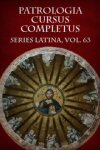
Patrologia Latina, vol. 63
- Editor: Jacques Paul Migne
- Series: Patrologiae Cursus Completus: Series Latina
Authors include*:
- Ennodius
- Hormisda, Papa
- Trifolius Presbyter
- Elpis
- Boetius
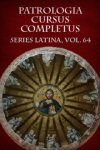
Patrologia Latina, vol. 64
- Editor: Jacques Paul Migne
- Series: Patrologiae Cursus Completus: Series Latina
Authors include*:
- Boetii
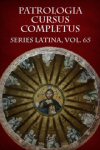
Patrologia Latina, vol. 65
- Editor: Jacques Paul Migne
- Series: Patrologiae Cursus Completus: Series Latina
Authors include*:
- Felix IV
- Prosper ex Manichaeo Conversus
- Bonifacius II
- Montanus
- S. Eleutherius
- S. Fulgentius
- S. Rhemigius Rhemensis

Patrologia Latina, vol. 66
- Editor: Jacques Paul Migne
- Series: Patrologiae Cursus Completus: Series Latina
Authors include*:
- Joannes II, Papa
- Agapetus I Papa
- Sylverius Papa
- S. Laurentius Novariensis
- S. P. Benedictus

Patrologia Latina, vol. 67
- Editor: Jacques Paul Migne
- Series: Patrologiae Cursus Completus: Series Latina
Authors include*:
- Dionysius Exiguus
- Viventiolus
- Justus Urgellensis
- S. Caesarius
- Trojanus
- Pontianus
- Facundus Hermianensis
- Ferrandus Diaconus
- Rusticus Diaconus
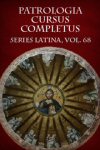
Patrologia Latina, vol. 68
- Editor: Jacques Paul Migne
- Series: Patrologiae Cursus Completus: Series Latina
Authors include*:
- S. Leo Senonensis
- Junilius
- Mappinius Rhemensis
- Arator
- Victor Capuanus
- S. Nicetius Trevirensis
- Agnellus
- S. Aurelianus Arelatensis
- Primasius
- Victor Tunonensis
- Liberatus Diaconus
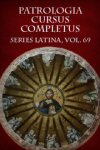
Patrologia Latina, vol. 69
- Editor: Jacques Paul Migne
- Series: Patrologiae Cursus Completus: Series Latina
Authors include*:
- Vigilius Fapa
- Gildas Sapiens
- Pelagius, Papa
- Cassiodorus
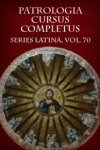
Patrologia Latina, vol. 70
- Editor: Jacques Paul Migne
- Series: Patrologiae Cursus Completus: Series Latina
Authors include*:
- Cassiodori
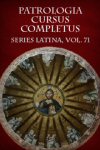
Patrologia Latina, vol. 71
- Editor: Jacques Paul Migne
- Series: Patrologiae Cursus Completus: Series Latina
Authors include*:
- S. Gregori Turnonensis
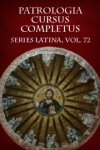
Patrologia Latina, vol. 72
- Editor: Jacques Paul Migne
- Series: Patrologiae Cursus Completus: Series Latina
Authors include*:
- Joannes, Papa III
- S. Martinus Bracarensis Episc.
- S. Germanus Parisiensis Episc.
- S. Domnolus Cenomanensis Episc.
- S. Radegundis
- Benedictus, Papa I
- Licinianus Carthaginensis Episc.
- Pelagius, papa II
- et Alii Numero Tredecim
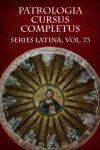
Patrologia Latina, vol. 73
- Editor: Jacques Paul Migne
- Series: Patrologiae Cursus Completus: Series Latina
Authors include*:
- Vitae Patrum, Sive, Historiae Eremiticae Libri Decem.
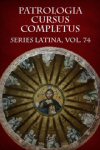
Patrologia Latina, vol. 74
- Editor: Jacques Paul Migne
- Series: Patrologiae Cursus Completus: Series Latina
Authors include*:
- Vitae Patrum, Sive, Historiae Eremiticae Libri Decem. Addenda
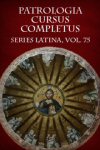
Patrologia Latina, vol. 75
- Editor: Jacques Paul Migne
- Series: Patrologiae Cursus Completus: Series Latina
Authors include*:
- Sancti Gregorii, Papae I
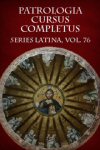
Patrologia Latina, vol. 76
- Editor: Jacques Paul Migne
- Series: Patrologiae Cursus Completus: Series Latina
Authors include*:
- Sancti Gregorii Magni
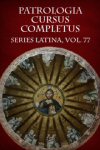
Patrologia Latina, vol. 77
- Editor: Jacques Paul Migne
- Series: Patrologiae Cursus Completus: Series Latina
Authors include*:
- Sancti Gregorii Magni
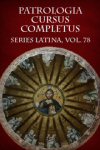
Patrologia Latina, vol. 78
- Editor: Jacques Paul Migne
- Series: Patrologiae Cursus Completus: Series Latina
Authors include*:
- Sancti Gregorii Magni
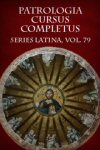
Patrologia Latina, vol. 79
- Editor: Jacques Paul Migne
- Series: Patrologiae Cursus Completus: Series Latina
Authors include*:
- Sancti Gregorii Magni
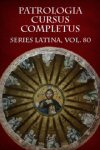
Patrologia Latina, vol. 80
- Editor: Jacques Paul Migne
- Series: Patrologiae Cursus Completus: Series Latina
Authors include*:
- Patres Qui in VII Saeculi Prima Parte Floruerunt
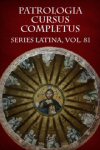
Patrologia Latina, vol. 81
- Editor: Jacques Paul Migne
- Series: Patrologiae Cursus Completus: Series Latina
Authors include*:
- Sancti Isidori Hispalensis
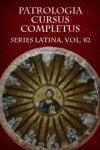
Patrologia Latina, vol. 82
- Editor: Jacques Paul Migne
- Series: Patrologiae Cursus Completus: Series Latina
Authors include*:
- Sancti Isidori Hispalensis
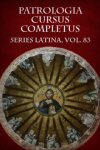
Patrologia Latina, vol. 83
- Editor: Jacques Paul Migne
- Series: Patrologiae Cursus Completus: Series Latina
Authors include*:
- Sancti Isidori Hispalensis
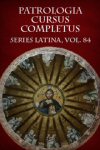
Patrologia Latina, vol. 84
- Editor: Jacques Paul Migne
- Series: Patrologiae Cursus Completus: Series Latina
Authors include*:
- Sancti Isidori Hispalensis
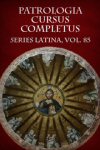
Patrologia Latina, vol. 85
- Editor: Jacques Paul Migne
- Series: Patrologiae Cursus Completus: Series Latina
Authors include*:
- Liturgiae Mozarabicae
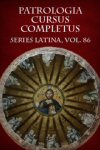
Patrologia Latina, vol. 86
- Editor: Jacques Paul Migne
- Series: Patrologiae Cursus Completus: Series Latina
Authors include*:
- Liturgiae Mozarabicae
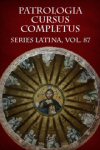
Patrologia Latina, vol. 87
- Editor: Jacques Paul Migne
- Series: Patrologiae Cursus Completus: Series Latina
Authors include*:
- Patres Gui in Vii Saeculi Secunda Parte Floruerunt
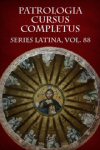
Patrologia Latina, vol. 88
- Editor: Jacques Paul Migne
- Series: Patrologiae Cursus Completus: Series Latina
Authors include*:
- Venantius Fortunatus
- Defensor
- Evantius
- Arculfus
- Adamanus
- Crisconius
- Tres Incerti Auctores
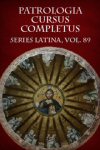
Patrologia Latina, vol. 89
- Editor: Jacques Paul Migne
- Series: Patrologiae Cursus Completus: Series Latina
Authors include*:
- Maxima Pars Auctorum Octavi Saeculi
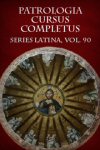
Patrologia Latina, vol. 90
- Editor: Jacques Paul Migne
- Series: Patrologiae Cursus Completus: Series Latina
Authors include*:
- Venerabilis Bedae
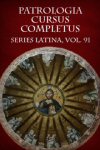
Patrologia Latina, vol. 91
- Editor: Jacques Paul Migne
- Series: Patrologiae Cursus Completus: Series Latina
Authors include*:
- Venerabilis Bedae
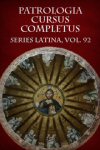
Patrologia Latina, vol. 92
- Editor: Jacques Paul Migne
- Series: Patrologiae Cursus Completus: Series Latina
Authors include*:
- Venerabilis Bedae
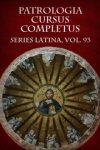
Patrologia Latina, vol. 93
- Editor: Jacques Paul Migne
- Series: Patrologiae Cursus Completus: Series Latina
Authors include*:
- Venerabilis Bedae
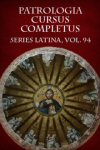
Patrologia Latina, vol. 94
- Editor: Jacques Paul Migne
- Series: Patrologiae Cursus Completus: Series Latina
Authors include*:
- Venerabilis Bedae
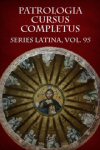
Patrologia Latina, vol. 95
- Editor: Jacques Paul Migne
- Series: Patrologiae Cursus Completus: Series Latina
Authors include*:
- Venerabilis Bedae
- Pauli Winfridi

Patrologia Latina, vol. 96
- Editor: Jacques Paul Migne
- Series: Patrologiae Cursus Completus: Series Latina
Authors include*:
- SS. Hildefonsus
- Leodegarius
- Julianus
- Plurimi Auctores Saeculi VIII
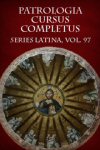
Patrologia Latina, vol. 97
- Editor: Jacques Paul Migne
- Series: Patrologiae Cursus Completus: Series Latina
Authors include*:
- Operum Beati Caroli Magni Imperatoris
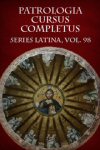
Patrologia Latina, vol. 98
- Editor: Jacques Paul Migne
- Series: Patrologiae Cursus Completus: Series Latina
Authors include*:
- Operum Beati Caroli Magni Imperatoris

Patrologia Latina, vol. 99
- Editor: Jacques Paul Migne
- Series: Patrologiae Cursus Completus: Series Latina
Authors include*:
- Sanctus Paulinus
- Theodorus Cantuariensis
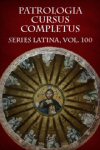
Patrologia Latina, vol. 100
- Editor: Jacques Paul Migne
- Series: Patrologiae Cursus Completus: Series Latina
Authors include*:
- Beati Flacci Albini Seu Alcuini
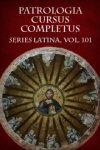
Patrologia Latina, vol. 101
- Editor: Jacques Paul Migne
- Series: Patrologiae Cursus Completus: Series Latina
Authors include*:
- Beati Flacci Albini Seu Alcuini

Patrologia Latina, vol. 102
- Editor: Jacques Paul Migne
- Series: Patrologiae Cursus Completus: Series Latina
Authors include*:
- Smaragdus Abbas
- S. Leo III
- Stephanus IV
- Paschalis I, Pontifices Romani
- Magnus Senonensis
- Remigius Curiensis
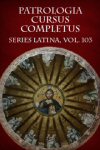
Patrologia Latina, vol. 103
- Editor: Jacques Paul Migne
- Series: Patrologiae Cursus Completus: Series Latina
Authors include*:
- S. Benedictus Abbas
- Sedulius Scotus
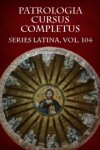
Patrologia Latina, vol. 104
- Editor: Jacques Paul Migne
- Series: Patrologiae Cursus Completus: Series Latina
Authors include*:
- S. Agobardus
- Eginhardus Abbas
- Claudius Taurinensis
- Ludovicus Primus Cognomento Pius
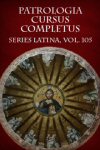
Patrologia Latina, vol. 105
- Editor: Jacques Paul Migne
- Series: Patrologiae Cursus Completus: Series Latina
Authors include*:
- Theodulfus
- S. Eigil
- Ermoldus Nigellus
- Amalarius
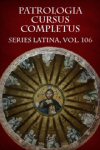
Patrologia Latina, vol. 106
- Editor: Jacques Paul Migne
- Series: Patrologiae Cursus Completus: Series Latina
Authors include*:
- Gregorius IV
- Sergius II
- Jonas
- Freculphus
- Frotharius
- Agnellus
- Hilduinus
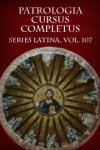
Patrologia Latina, vol. 107
- Editor: Jacques Paul Migne
- Series: Patrologiae Cursus Completus: Series Latina
Authors include*:
- B. Rabani Mauri
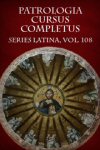
Patrologia Latina, vol. 108
- Editor: Jacques Paul Migne
- Series: Patrologiae Cursus Completus: Series Latina
Authors include*:
- B. Rabani Mauri

Patrologia Latina, vol. 109
- Editor: Jacques Paul Migne
- Series: Patrologiae Cursus Completus: Series Latina
Authors include*:
- B. Rabani Mauri
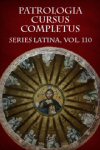
Patrologia Latina, vol. 110
- Editor: Jacques Paul Migne
- Series: Patrologiae Cursus Completus: Series Latina
Authors include*:
- B. Rabani Mauri
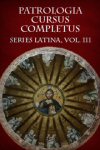
Patrologia Latina, vol. 111
- Editor: Jacques Paul Migne
- Series: Patrologiae Cursus Completus: Series Latina
Authors include*:
- B. Rabani Mauri
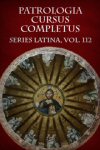
Patrologia Latina, vol. 112
- Editor: Jacques Paul Migne
- Series: Patrologiae Cursus Completus: Series Latina
Authors include*:
- B. Rabani Mauri
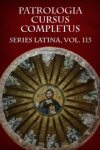
Patrologia Latina, vol. 113
- Editor: Jacques Paul Migne
- Series: Patrologiae Cursus Completus: Series Latina
Authors include*:
- Walafridi Strabi
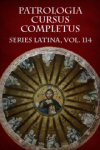
Patrologia Latina, vol. 114
- Editor: Jacques Paul Migne
- Series: Patrologiae Cursus Completus: Series Latina
Authors include*:
- Walafridi Strabi
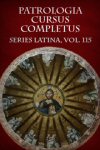
Patrologia Latina, vol. 115
- Editor: Jacques Paul Migne
- Series: Patrologiae Cursus Completus: Series Latina
Authors include*:
- Ahyto
- Audradus
- Aldricus
- Leo IV
- Benedictus III
- Angelomus
- S. Eulogius
- S. Prudentius
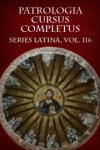
Patrologia Latina, vol. 116
- Editor: Jacques Paul Migne
- Series: Patrologiae Cursus Completus: Series Latina
Authors include*:
- Hebbo
- Hartmannus
- Ermanricus
- Erchambertus
- Nithardus
- Amulo
- Haymo
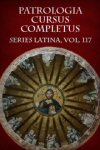
Patrologia Latina, vol. 117
- Editor: Jacques Paul Migne
- Series: Patrologiae Cursus Completus: Series Latina
Authors include*:
- Haymonis
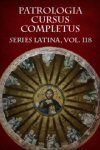
Patrologia Latina, vol. 118
- Editor: Jacques Paul Migne
- Series: Patrologiae Cursus Completus: Series Latina
Authors include*:
- Haymonis
- Anscharius

Patrologia Latina, vol. 119
- Editor: Jacques Paul Migne
- Series: Patrologiae Cursus Completus: Series Latina
Authors include*:
- Florus Diaconus
- Lupus Ferrariensis
- Rodulfus Bituricensis
- Walterius Aurelianensis
- Rothadus II Suessionensis
- Nicolaus Papa I
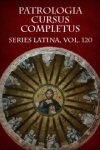
Patrologia Latina, vol. 120
- Editor: Jacques Paul Migne
- Series: Patrologiae Cursus Completus: Series Latina
Authors include*:
- Sancti Paschasii Radberti
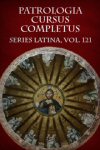
Patrologia Latina, vol. 121
- Editor: Jacques Paul Migne
- Series: Patrologiae Cursus Completus: Series Latina
Authors include*:
- Ratramni
- Aeneae Parisiensis
- S. Remigii

Patrologia Latina, vol. 122
- Editor: Jacques Paul Migne
- Series: Patrologiae Cursus Completus: Series Latina
Authors include*:
- Joannes Scotus Erigena
- Adrianus Papa II
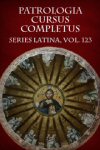
Patrologia Latina, vol. 123
- Editor: Jacques Paul Migne
- Series: Patrologiae Cursus Completus: Series Latina
Authors include*:
- Ado
- Usuardus
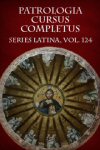
Patrologia Latina, vol. 124
- Editor: Jacques Paul Migne
- Series: Patrologiae Cursus Completus: Series Latina
Authors include*:
- Usuardus
- Carolus Calvus
- Hincmarus
- Isaacus
- Odo
- Adrevaldus
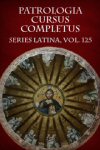
Patrologia Latina, vol. 125
- Editor: Jacques Paul Migne
- Series: Patrologiae Cursus Completus: Series Latina
Authors include*:
- Hincmari Rhemensis Archiepiscopi
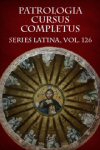
Patrologia Latina, vol. 126
- Editor: Jacques Paul Migne
- Series: Patrologiae Cursus Completus: Series Latina
Authors include*:
- Hincmari
- Joannis VIII
- Martini I
- Adriani II
- Bertarii
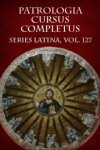
Patrologia Latina, vol. 127
- Editor: Jacques Paul Migne
- Series: Patrologiae Cursus Completus: Series Latina
Authors include*:
- Anastasii Bibliothecarii
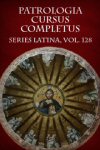
Patrologia Latina, vol. 128
- Editor: Jacques Paul Migne
- Series: Patrologiae Cursus Completus: Series Latina
Authors include*:
- Anastasii Bibliothecarii
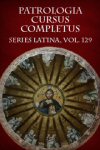
Patrologia Latina, vol. 129
- Editor: Jacques Paul Migne
- Series: Patrologiae Cursus Completus: Series Latina
Authors include*:
- Anastasius Bibliothecarius, Abbas
- Stephanus V
- Formosus
- Stephanus VI
- Romanus, Pontif. Rom.
- Erchembertus, Monach.
- Angilbertus, Abbas
- S. Tutilo, Monach.
- Grimlaicus
- Wolfardus, Presbyteri
- Anamodus Subdiaconus
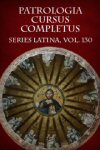
Patrologia Latina, vol. 130
- Editor: Jacques Paul Migne
- Series: Patrologiae Cursus Completus: Series Latina
Authors include*:
- Isidorus Mercator
- Marcus Valerius Probus
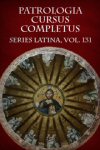
Patrologia Latina, vol. 131
- Editor: Jacques Paul Migne
- Series: Patrologiae Cursus Completus: Series Latina
Authors include*:
- Remigius Monach. S. Germ. Antiss.
- B. Notkerus Balbulus, S. Galli Monachus
- Joannes IX
- Benedictus IV
- Sergius III
- Anastasius III
- Pontifices Romani
- Fulco Rhemensis
- Riculfus Suessionensis
- Mancio Catalaunensis
- Hatto Moguntinus Episcopi
- Martinianus Monachus
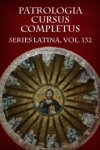
Patrologia Latina, vol. 132
- Editor: Jacques Paul Migne
- Series: Patrologiae Cursus Completus: Series Latina
Authors include*:
- Regino Prumiensis Abbas
- Hucbaldus
- Monachus
- Elnonensis
- Joannes X
- Leo VI
- Stephanus VII
- Leo VII
- Stephanus VIII Rom. Pont.
- S. Radbodus Trajectensis
- Waldrammus Argentinensis
- Salmo Constantiensis
- Stephanus Leodiensis
- Walterius Senonensis
- Dado Virdunensis, Episc.
- Hervaeus Rhemensis
- Agio Narbonensis
- Seulfus Rhemensis, Archiep.
- Odilo Monachus
- S. Medardus Suessionensis
- Radbodus Dolensis
- Abbo Sangermanensis
- Monachus
- Cyprianus Cordubensis
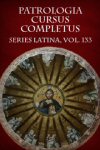
Patrologia Latina, vol. 133
- Editor: Jacques Paul Migne
- Series: Patrologiae Cursus Completus: Series Latina
Authors include*:
- S. Odo Abas Cluniacensis
- Marinus II
- Agapetus II
- Joannes XII, Pont. Rom.
- S. Odo Episcopus Cantuariensis
- Rorico Laudunensis Episcopus
- Arthaldus
- Odalricus, Rhem. Archiep.
- Cappidus Stavriensis Sacerd.
- Cosmas Japygus Materiensis
- Joannes Italus
- Laurentius, Cassin. Monach.
- Sigehardus Monach.
- S. Maximini
- Fridegodus Bened. Monach.

Patrologia Latina, vol. 134
- Editor: Jacques Paul Migne
- Series: Patrologiae Cursus Completus: Series Latina
Authors include*:
- Atto Vercellensis Episcopus
- Leo VIII Antipapa
- Bruno Coloniensis
- Wiboldus Cameracensis, Archiepisc.
- Utho Argentinensis Episc.
- Adalgerus Episc. Incertae Sedis
- Guillelmus Cabillonensis Monach.
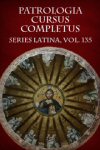
Patrologia Latina, vol. 135
- Editor: Jacques Paul Migne
- Series: Patrologiae Cursus Completus: Series Latina
Authors include*:
- Flodoardus Canonicus Remensis
- Joannes XIII
- Benedictus VI
- Sancta Mathildis
- Gumpoldus Mantuanus
- Eraclius Leodiensis
- Udalricus Augustanus
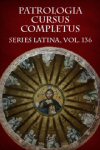
Patrologia Latina, vol. 136
- Editor: Jacques Paul Migne
- Series: Patrologiae Cursus Completus: Series Latina
Authors include*:
- Ratherius Veron. Episc.
- Liutprandus Cremonensis
- Folquinus S. Bertini Monach.
- Gunzo Diac. Novar.
- Richardus Abbas Floriacensis
- Adalbertus Metensis Schol
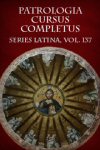
Patrologia Latina, vol. 137
- Editor: Jacques Paul Migne
- Series: Patrologiae Cursus Completus: Series Latina
Authors include*:
- Hrotsuitha Virg. et Mon. Gandersheimensis
- Benedictus VII
- Joannes XIV
- Joannes XV
- Gregorius V, Summ. Pont.
- S. Dunstanus Cantuariensis
- Adalbero Pragensis Remensis, Archiep.
- Ethelwoldus Wintoniensis
- Theodoricus Metensis
- Erkembaldus Argentinensis
- Guido II Podiensis
- S. Adalbertus, Episc.
- Joannes Abbas
- S. Anulphi Metensis
- Folcuinus Abbas Laubiensis
- Bernerus Abbas Humolariensis
- Adso Abbas Dervensis
- Gezo Abbas Dertonensis
- Aymardus
- Maiolus
- Abbates Cluniacenses
- Windukindus Mon. Corbeiensis
- Letaldus Mon. Miciacensis
- Odo Diac. Ausciensis
- Wigo Decanus Phyuhtwangensis
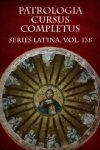
Patrologia Latina, vol. 138
- Editor: Jacques Paul Migne
- Series: Patrologiae Cursus Completus: Series Latina
Authors include*:
- Richerus S. Remigii Monachus
- Auctores Incerti Anni
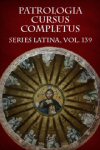
Patrologia Latina, vol. 139
- Editor: Jacques Paul Migne
- Series: Patrologiae Cursus Completus: Series Latina
Authors include*:
- Silvester II
- Joannes XVIII
- Sergius IV
- Benedictus VIII
- Arnulfus Rem.
- Aelfricus Cantuar.
- Thietmarus Merseburg.
- Notgerus Leod.
- Henricus Parm.
- Bruno Lingon.
- Arnoldus Halberst.
- S. Abbo Floriac.
- Albertus Miciac.
- Herigerus Lob.
- Constantinus S. Symphor.
- Gospertus
- Tegern.
- Abbates
- Aimoinus Floriac.
- Tietpaldus Tegern.
- Benedictus S. Andr.
- Purchardus Aug. Div.
- Rorico Moissiac.
- Joannes Diac. Venet.
- Bridfertus Rames.
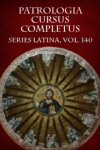
Patrologia Latina, vol. 140
- Editor: Jacques Paul Migne
- Series: Patrologiae Cursus Completus: Series Latina
Authors include*:
- S. Henricus Imperator
- Thangmarus Presbyter Hildesheimensis
- Alpertus Monachus S. Symphoriani Metensis
- Burchardus Vormatiensis Episcopus
- Adelboldus Trajectensis Episcopus
- Sanctus Romualdus Ordinis Camaldulensis Institutor
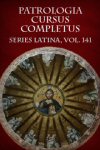
Patrologia Latina, vol. 141
- Editor: Jacques Paul Migne
- Series: Patrologiae Cursus Completus: Series Latina
Authors include*:
- Ademarus S. Cibardi Monachus
- Bernardus Scholasticus Andegavensis
- S. Fulbertus Carnotensis Episcopus
- Guido Aretinus
- Lambertus Annalista
- Dudo Decanus S. Quintini
- Gauslinus Bituricensis Archiepiscopus
- Adalbero Laudunensis Episcopus
- Guillelmus Dux Aquitaniae
- S. Guillelmus Abbas S. Benigni Divionensis
- Robertus Rex Francorum
- Meginfredus Magdeburgensis Praepositus
- Arnoldus ex Comite Vohburgensi Monachus S. Emmerammi
- Aribo Moguntinus Archiepiscopus
- Ebalus Remensis Archiepiscopus
- Joannes XIX Papa
- S. Godehardus Episcopus Hildesheimensis
- Catwallonus Rothonensis Abbas
- Froumundus Coenobita Tegernseensis
- Eberhardus
- Peringerus
- Ellingerus
- Udalricus
- Abbates Tegernseenses
- Godeschalkus
- Leduinus Abbas S. Vedasti
- Othelboldus Abbas S. Bavonis
- Benedictus IX Papa
- Heribertus Eischttettensis Episcopus
- Emma Regina Anglorum
- Poppo Trevirensis Archiepiscopus
- Angelrannus Abbas S. Richarii
- Papias Grammaticus
- Rotbertus Londinensis
- Garcias Mon. Cuxasensis
- Dominicus Gradensis Patriarcha
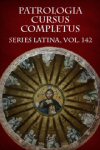
Patrologia Latina, vol. 142
- Editor: Jacques Paul Migne
- Series: Patrologiae Cursus Completus: Series Latina
Authors include*:
- S. Bruno Herbipolensis Episcopus
- S. Odii O Abbas Cluniacensis
- Berno Abbas Augiensis
- Gregorius VI
- Clemens II
- Romani Pontifices
- Rodulphus Glaber
- Wippo Presbyter
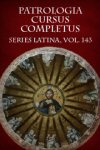
Patrologia Latina, vol. 143
- Editor: Jacques Paul Migne
- Series: Patrologiae Cursus Completus: Series Latina
Authors include*:
- Hermannus Contractus Monachus Augiae Divitis
- Humbertus S. R. E. Cardinalis
- S. Leo IX
- Victor II
- Stephanus IX
- Nicolaus II
- Stephanus Cardinalis
- B. Maurilius Rothomagensis
- Gervasius Remensis
- Raimbaldus Arelatensis
- Leodegarius Viennensis
- S. Anno Coloniensis
- Archiepiscopi
- Drogo Bellovacensis
- Joannes sabinensis
- Adelmannus Brixiensis
- Hugo II Nivernensis
- Frollandus Sylvanectensis
- Leo Atinensis
- Bovo Abbas S. Bertini
- Widricus Abbas S. Ghisleni
- Avesgotus Abbas S. Petri culturae Cenomanensis
- Theuzo Eremita et Monachus
- Odo Monachus Fossatensis
- Anselmus Canonicus Leodiensis
- Gozechinus Scholasticus
- Franco Scholasticus Leodiensis
- SS. Arialdus et Herlembaldus
- Berengarius Vicecomes Narbonensis
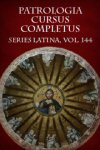
Patrologia Latina, vol. 144
- Editor: Jacques Paul Migne
- Series: Patrologiae Cursus Completus: Series Latina
Authors include*:
- S. Petri Dmiani
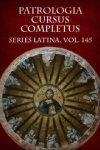
Patrologia Latina, vol. 145
- Editor: Jacques Paul Migne
- Series: Patrologiae Cursus Completus: Series Latina
Authors include*:
- S. Petri Dmiani
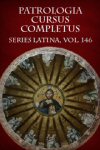
Patrologia Latina, vol. 146
- Editor: Jacques Paul Migne
- Series: Patrologiae Cursus Completus: Series Latina
Authors include*:
- Othlo Monachus S. Emmerammi
- Adamus Canonicus Bremensis
- S. Joannes Gualbertus Abbas Vallumbrosanus
- Gundecharus Eischtettensis Episcopus
- Lambertus Hersfeldensis
- Petrus Malleacensis Monachus
- Alexander II
- Hugo I Trecensis Epicopus
- Deoduinus Leodiensis Episcopus
- S. Lietbertus Cameracensis Episcopus
- Rogerius Jc. Italus
- Guido Ambianensis Episcopus
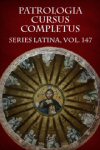
Patrologia Latina, vol. 147
- Editor: Jacques Paul Migne
- Series: Patrologiae Cursus Completus: Series Latina
Authors include*:
- Joannes Archiepiscopus Rothomagensis
- Alphanus Salernitanus Archiepiscopus
- Arnulfus Clericus Mediolanensis
- Bertholdus Constantiensis
- Bruno Magdeburgensis Clericus
- Marianus Scottus
- Landulfus Clericus Mediolanensis
- Gebuinus Lugdunensis Archiepiscopus
- Gualterius Meldensis
- Eusebius Bruno Andegavensis
- Sanctus Geraldus Silvae Majoris Primus Abbas
- Joannes Fiscamnensis Abbas
- Thomellus Monachus Hasnoniensis
- Renallus Magister Sedis Barcinonensis
- Folcardus Sithivensis Monachus
- Guaiferius Monachus Casinensis
- Theodericus Paderbrunnensis Canonicus
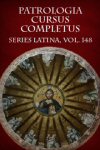
Patrologia Latina, vol. 148
- Editor: Jacques Paul Migne
- Series: Patrologiae Cursus Completus: Series Latina
Authors include*:
- Sancti Gregorii VII
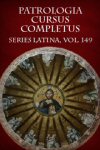
Patrologia Latina, vol. 149
- Editor: Jacques Paul Migne
- Series: Patrologiae Cursus Completus: Series Latina
Authors include*:
- S. Anselmus Lucensis
- Willelmus Primus Anglorum Rex
- Guitmundus Archiepiscopus Aversanus
- S. Anastasius Monachus Et Eremita
- Bartholomaeus Abbas Majoris Monasterii
- Durandus Abbas Troarnensis
- Osbernus Cantuariensis Monachus
- Udalricus Cluniacensis
- Godefridus Stabulensis
- Willelmus Calculus Gemmeticensis Monachus
- Gaufredus Malaterrae Monachus Benedictinus
- Guillelmus Apulus
- Ebrardus Watinensis Monachus
- Bernardus Comes Bisuldinensis
- Samuel Marochianus ex Judaeo Christianu
- Gesta Pontificum Cameracensium
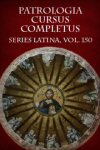
Patrologia Latina, vol. 150
- Editor: Jacques Paul Migne
- Series: Patrologiae Cursus Completus: Series Latina
Authors include*:
- Victor III, Rom. Pont.
- B. Lanfrancus Cantuar.
- Raynaldus Rem.
- Deusdedit S. R. E. Card.
- Gerardus Ii Camerac.
- Herimannus Met. Bonizo Placent.
- Durandus Claromont.
- Bernardus Lutev.
- Radbodus Ii Tornac. Et Noviom.
- Agano Augustodun.
- Rufinus Incertae Sedis
- Guillelmus Abb. S. Arnulfi Met.
- S. Wilhelmus Abb. Hirsaug.
- Guido Abb. Farf.
- Robertus De Tumbalena Abb. S. Vigoris
- Fulco Abb. Corbei.
- Rogerius Monac. Becc.
- Gillebertus Monac. Elnon.
- Willelmus Clus. Monac.
- Hemmingus Presb. Wigorn.
- Odalricus Praepositus Rem.
- Fulcoius Meld. Subdiac.
- Constantinus Africanus Casin. Mon
- Henricus Cleric. Pompos.
- Theodoricus S. Audoeni Mon.
- Willelmus Pictav.
- Joannes De Garlandia
- Aribo Music.
- J. Cotto Music
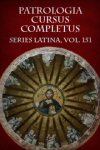
Patrologia Latina, vol. 151
- Editor: Jacques Paul Migne
- Series: Patrologiae Cursus Completus: Series Latina
Authors include*:
- B. Urbanus II Papa

Patrologia Latina, vol. 152
- Editor: Jacques Paul Migne
- Series: Patrologiae Cursus Completus: Series Latina
Authors include*:
- S. Bruno Carthusiensium Institutor
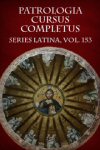
Patrologia Latina, vol. 153
- Editor: Jacques Paul Migne
- Series: Patrologiae Cursus Completus: Series Latina
Authors include*:
- S. Bruno Carthusiensium Institutor
- Guio I
- Guio II
- Priores Carthusiae Majoris
- S. Hugo Licolniensis Episcopus
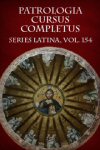
Patrologia Latina, vol. 154
- Editor: Jacques Paul Migne
- Series: Patrologiae Cursus Completus: Series Latina
Authors include*:
- Hugo Abbas Flaviniacensis
- B. Wolphelmus Abbas Brunswillerensis
- Ekkehardus Uraugiensis
- Anonymi
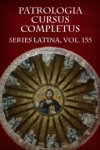
Patrologia Latina, vol. 155
- Editor: Jacques Paul Migne
- Series: Patrologiae Cursus Completus: Series Latina
Authors include*:
- Godefridus Bullonius Hierosol. Rex.
- Radulphus Ardens.
- Lupus Protospat.
- Anselmus Mediol.
- Bernardus Tolet.
- Thomas Eborac.
- Albericus Ostien.
- Amatus Burdegal.
- Poppo Meten.
- Richardus De Dumellis Abb. Pratell.
- Manegaldus Presb.
- Goscelinus Cantuar.
- Sulcardus Westmonast.
- Paulus S. Petr. Carnot. Monachi.
- Fratres Majoris Monasterii
- Bruno
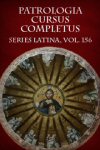
Patrologia Latina, vol. 156
- Editor: Jacques Paul Migne
- Series: Patrologiae Cursus Completus: Series Latina
Authors include*:
- Ven Guibertus Abbas S. Mariae De Novigento
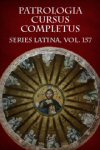
Patrologia Latina, vol. 157
- Editor: Jacques Paul Migne
- Series: Patrologiae Cursus Completus: Series Latina
Authors include*:
- Goffridus Abb. Vindocin.
- Thiofridus Abb. Efternac.
- Petrus Alphonsi.
- Wernerus Abb. S. Blasii
- Hugo Lugdun.
- Adelgorius Magdeburg., Archiepp
- Pibo Tull. Episc.
- Galterus Ab Insulis Magalon. Episc. Et Lietbertus Abb. S. Rufi.
- S. Robertus Abb. Molism.
- Suavius Abb. S. Severi.
- Folcardus Abb. Lob.
- Theodoricus Abb. S. Huberti Andagin.
- Mathildis Comitissa.
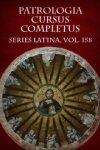
Patrologia Latina, vol. 158
- Editor: Jacques Paul Migne
- Series: Patrologiae Cursus Completus: Series Latina
Authors include*:
- S. Anselmus
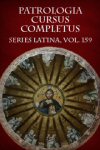
Patrologia Latina, vol. 159
- Editor: Jacques Paul Migne
- Series: Patrologiae Cursus Completus: Series Latina
Authors include*:
- S. Anselmus ex Beccensi Abbate Cantuariensis Archiepiscopus.
- Eadmerus Monachus Cantuariensis.
- Gundulfus Roffensis Episcopus.
- Philippus Francorum Rex.
- S. Hugo Cluniacensis.
- Walramus Episcopus Numburgensis.
- Gilbertus Episcopus Lunicensis.
- Gislebertus Abbas Westmonasteriensis
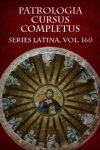
Patrologia Latina, vol. 160
- Editor: Jacques Paul Migne
- Series: Patrologiae Cursus Completus: Series Latina
Authors include*:
- Sigebertus Gemblacensis Monachus.
- Anonymus.
- B. Odo Cameracensis
- Walterus Cabilonensis
- J. Marsicanus
- Berengosus Abbas S. Maximi Trevirensis
- Radulfus Tortarius Floriacensis Monachus
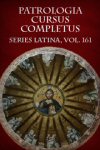
Patrologia Latina, vol. 161
- Editor: Jacques Paul Migne
- Series: Patrologiae Cursus Completus: Series Latina
Authors include*:
- S. Ivo
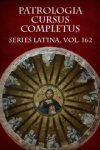
Patrologia Latina, vol. 162
- Editor: Jacques Paul Migne
- Series: Patrologiae Cursus Completus: Series Latina
Authors include*:
- S. Ivo Carnot. Episc.
- Petrus Chrysolanus Mediol. Archiep.
- Richardus Card.
- Lambertus Atrebat.
- Galo Paris.
- Godefridus Ambian.
- Episcopi.
- Anselmus Scholast. Et Can. Laudun.
- B. Robertus De Arbrissello.
- Seherus Calmosiac.
- Abb. Joannes Mon. S. Audoeni.
- Joannes Mon. Besuen.
- Franciscus Camenus.
- Reimbaldus Praepos.
- S. Joann. Leod.
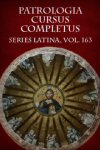
Patrologia Latina, vol. 163
- Editor: Jacques Paul Migne
- Series: Patrologiae Cursus Completus: Series Latina
Authors include*:
- Paschalis II
- Gelasius II
- Calixtus II
- Conon S. R. E. Card.
- Radulfus Rem.
- Radulfus Cantuar.
- Guillelmus De Campellis Catal.
- Theogerus Meten.
- Ernulfus Roff.
- Marbodus Redon.
- Placidus Incertae Sedis Episc.
- Arnaldus S. Petr. Vivi Senon. Abb.
- Pontius Abb. S. Rufi.
- Gregorius Presb. Rom.
- Petrus De Honestis Cler. Raven.
- Hugo De Sancta Maria Floriac. Mon.
- Laurentius Veron.
- Theobaldus Stamp.
- Lambertus Audomar
- Hugo De Cleriis
- Joannes Constant.
- Anonymus Meten.
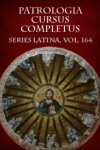
Patrologia Latina, vol. 164
- Editor: Jacques Paul Migne
- Series: Patrologiae Cursus Completus: Series Latina
Authors include*:
- S. Bruno
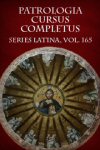
Patrologia Latina, vol. 165
- Editor: Jacques Paul Migne
- Series: Patrologiae Cursus Completus: Series Latina
Authors include*:
- S. Bruno
- Oddo
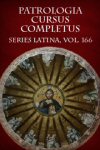
Patrologia Latina, vol. 166
- Editor: Jacques Paul Migne
- Series: Patrologiae Cursus Completus: Series Latina
Authors include*:
- Baldricus Dolensis Archiep.
- Honorius II Rom. Pont.
- Cosmas Pragensis.
- Albericus Aquensis.
- Drogo Card.
- Petrus Leonis
- Gregorius S. R. E.
- Fridericus Colon. Archiep.
- S. Hugo Gratian.
- Bruno Argentin. Episcopi.
- S. Stephanus Cisterc. III
- Franco Affligem.
- Pontius Cluniac.
- Abbaudus
- Richardus Pratei L.
- G., Abbates.
- Domnizo Presb. Canus.
- Joannes Mon.
- Vivianus Praemonst.
- Joannes Michaelensis.
- Gualterus Tarv.
- Galbertus Brug.
- Hugo De Ribodimonte
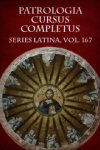
Patrologia Latina, vol. 167
- Editor: Jacques Paul Migne
- Series: Patrologiae Cursus Completus: Series Latina
Authors include*:
- R. D. D. Rupertus
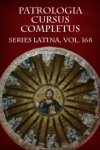
Patrologia Latina, vol. 168
- Editor: Jacques Paul Migne
- Series: Patrologiae Cursus Completus: Series Latina
Authors include*:
- R. D. D. Rupertus
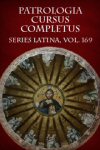
Patrologia Latina, vol. 169
- Editor: Jacques Paul Migne
- Series: Patrologiae Cursus Completus: Series Latina
Authors include*:
- R. D. D. Rupertus
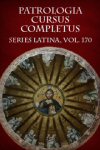
Patrologia Latina, vol. 170
- Editor: Jacques Paul Migne
- Series: Patrologiae Cursus Completus: Series Latina
Authors include*:
- R. D. D. Rupertus
- Hermannus ex Judaeo Christianus.
- Udascalcus Monachus Augustanus.
- Munio Mindoniensis
- Hugo Portucalensis in Gallaecica
- Gerardus Presbyter.
- S. Norbertus Archiepiscopus Magdeburgensis
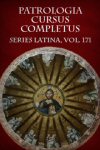
Patrologia Latina, vol. 171
- Editor: Jacques Paul Migne
- Series: Patrologiae Cursus Completus: Series Latina
Authors include*:
- Wen. Hildebertus
- Marbodus
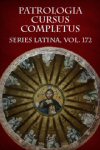
Patrologia Latina, vol. 172
- Editor: Jacques Paul Migne
- Series: Patrologiae Cursus Completus: Series Latina
Authors include*:
- Honorius Augustodunensis.
- Rainaldus Rem.
- Adalbertus Mogunt.
- Oldegarius Tarrac.
- Gerardus Engolism.
- Steph. De Balgiaco Augustodun.
- Odo Abbas S. Remigii.
- Gaufridus Grossus Mon. Tiron
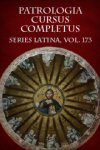
Patrologia Latina, vol. 173
- Editor: Jacques Paul Migne
- Series: Patrologiae Cursus Completus: Series Latina
Authors include*:
- Leo Marsicanus
- Petrus Diaconus.
- Rodulphus Abbas S. Trudonis.
- Falco Beneventanus.
- Landulphus Junior.
- S. Otto Bamberg. Episc.
- Matthaeus Card.
- Gilo Tuscul.
- Gaufridus Catal.
- Stephanus Paris.
- Episc. Gualterus Cluniac. Mon.
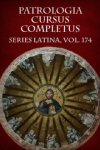
Patrologia Latina, vol. 174
- Editor: Jacques Paul Migne
- Series: Patrologiae Cursus Completus: Series Latina
Authors include*:
- Ven. Godefridus Abbas Admontensis
- Hariulfus Abbas Aldenburgensis
- Lisiardus Turonensis Clericus
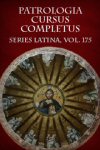
Patrologia Latina, vol. 175
- Editor: Jacques Paul Migne
- Series: Patrologiae Cursus Completus: Series Latina
Authors include*:
- Hugo de S. Victore
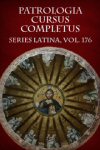
Patrologia Latina, vol. 176
- Editor: Jacques Paul Migne
- Series: Patrologiae Cursus Completus: Series Latina
Authors include*:
- Hugo de S. Victore
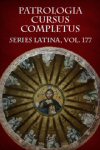
Patrologia Latina, vol. 177
- Editor: Jacques Paul Migne
- Series: Patrologiae Cursus Completus: Series Latina
Authors include*:
- Hugo de S. Victore
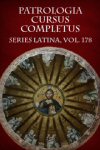
Patrologia Latina, vol. 178
- Editor: Jacques Paul Migne
- Series: Patrologiae Cursus Completus: Series Latina
Authors include*:
- Petrus Abaelardus
- Abbas Rugensis
- Hilarius
- Berengarius
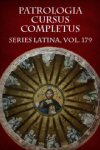
Patrologia Latina, vol. 179
- Editor: Jacques Paul Migne
- Series: Patrologiae Cursus Completus: Series Latina
Authors include*:
- Willelmus Malmesburiensis Monachus.
- Innocentius II
- Coelestinus II
- Lucius II, Rom. Pont.
- Anacletus Antipapa.
- Benedictus Canonicus.
- Hugo Farsitus.
- Frowinus Abbas.
- Arnulfus
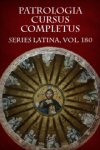
Patrologia Latina, vol. 180
- Editor: Jacques Paul Migne
- Series: Patrologiae Cursus Completus: Series Latina
Authors include*:
- Eugenius III Pont. Rom.
- Ulgerius Episcopus.
- Ogerius Abbas.
- Guillelmus Abbas.
- Hermannus Abbas.
- Algerus Canonicus.
- Teulfus Monachus.
- Joannes Monachus.
- Arnulfus De Doeriis.
- Henricus Salteriensis
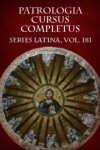
Patrologia Latina, vol. 181
- Editor: Jacques Paul Migne
- Series: Patrologiae Cursus Completus: Series Latina
Authors include*:
- Ven. Herveus Burgidolensis Monach.
- Hildebrandus Junior.
- Aimo Abb. S. Petri Div. et Petrus Monach.
- Guido Cariloci Abbas.
- Heribertus Monach.
- Bartholomaeus Catal. Episc.
- Bernardus Carthusiae Portarum Prior I.
- S. Bernardus Abb. Cisterc. V
- Hugo Matisconensis Antiss. Episc.
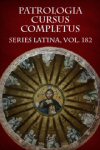
Patrologia Latina, vol. 182
- Editor: Jacques Paul Migne
- Series: Patrologiae Cursus Completus: Series Latina
Authors include*:
- S. Bernardus Abbas Clarae-Vallensis
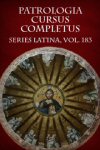
Patrologia Latina, vol. 183
- Editor: Jacques Paul Migne
- Series: Patrologiae Cursus Completus: Series Latina
Authors include*:
- S. Bernardus Abbas Clarae-Vallensis
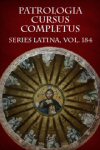
Patrologia Latina, vol. 184
- Editor: Jacques Paul Migne
- Series: Patrologiae Cursus Completus: Series Latina
Authors include*:
- S. Bernardus Abbas Clarae-Vallensis
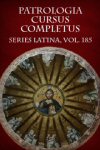
Patrologia Latina, vol. 185
- Editor: Jacques Paul Migne
- Series: Patrologiae Cursus Completus: Series Latina
Authors include*:
- S. Bernardus Abbas Clarae-Vallensis
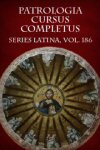
Patrologia Latina, vol. 186
- Editor: Jacques Paul Migne
- Series: Patrologiae Cursus Completus: Series Latina
Authors include*:
- Sugerius Abbas S. Dionysii.
- Robertus Pullus S. R. E. Cardinalis et Cancellarius.
- Joslenus Suessionensis
- Zacharias Chrysopolitanus
- Zacharias Ignotae Sedis Episcopus.
- Willelmus Sandionysianus Monachus
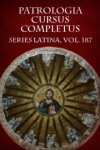
Patrologia Latina, vol. 187
- Editor: Jacques Paul Migne
- Series: Patrologiae Cursus Completus: Series Latina
Authors include*:
- Gratianus

Patrologia Latina, vol. 188
- Editor: Jacques Paul Migne
- Series: Patrologiae Cursus Completus: Series Latina
Authors include*:
- Ordericus Vitalis Angligena.
- Anastasius IV
- Adrianus IV, Pont. Rom
- Theobaldus Cantuar. Archiep.
- Atto Pistor.
- B. Amedeus Lausan.
- Anselmus Havelberg.
- Gislebertus Porretanus Picta V.
- Guerricus Igniac.
- Odo Morimund.
- Fastredus Claraevall.
- Joannes Cirita Tharauc. in Hisp.
- Gaufridus Claraevall.
- Hugo Metellus Can. Regul
- Gilbertus De Hoilandia
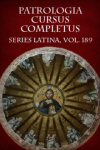
Patrologia Latina, vol. 189
- Editor: Jacques Paul Migne
- Series: Patrologiae Cursus Completus: Series Latina
Authors include*:
- Petrus Venerabilis, Abbas Cluniacensis Nonus
- Wibaldus Abbas Stabulensis
- Ernaldus Abbas Bonaevallis
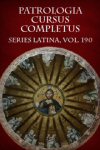
Patrologia Latina, vol. 190
- Editor: Jacques Paul Migne
- Series: Patrologiae Cursus Completus: Series Latina
Authors include*:
- S. Thomas Cantuar. Archiep.
- Herbertus de Boseham
- S. Thomae Cantuar. Clericus.
- Gilbertus Foliot. ex Abbate Glocest. Primum Episc. Hereford., Deinde London.
- Alanus Tewkesberiensis Abbas
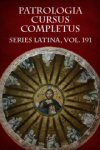
Patrologia Latina, vol. 191
- Editor: Jacques Paul Migne
- Series: Patrologiae Cursus Completus: Series Latina
Authors include*:
- Petrus Lombardus Magister Sententiarum, Parisiensis Episcopus
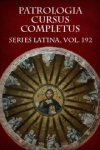
Patrologia Latina, vol. 192
- Editor: Jacques Paul Migne
- Series: Patrologiae Cursus Completus: Series Latina
Authors include*:
- Petrus Lombardus Magister Sententiarum
- Magister Bandinus, Theologus.
- Hugo Ambianensis, Rothomagensis Archiepiscopus
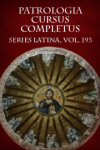
Patrologia Latina, vol. 193
- Editor: Jacques Paul Migne
- Series: Patrologiae Cursus Completus: Series Latina
Authors include*:
- Ven. Gerhohus Praepositus Reicherspergensis
- Garnerus Canonicus S. Victoris
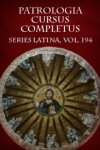
Patrologia Latina, vol. 194
- Editor: Jacques Paul Migne
- Series: Patrologiae Cursus Completus: Series Latina
Authors include*:
- Ven. Gerhohus
- Arno Reicherspergensis
- Joannes Diaconus
- Hugo Pictavinus
- Isaac Abbas De Stella.
- Alcherus et Petrus de Roya Claraevallenses Monachi.
- Rilindis Et Erradis Hohenburgenses Abbatissae
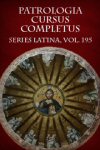
Patrologia Latina, vol. 195
- Editor: Jacques Paul Migne
- Series: Patrologiae Cursus Completus: Series Latina
Authors include*:
- B. Aelredus Abbas Rievall.
- Wolbero Abbas S. Pantaleonis Colon.
- Eckbertus Abbas Schonaug.
- Henricus Archidiac. Huntingdon.
- Odo De Deogilo Abbas S. Dionys.
- Bertrandus De Blancesfort Templar. Magister
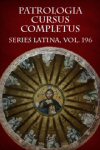
Patrologia Latina, vol. 196
- Editor: Jacques Paul Migne
- Series: Patrologiae Cursus Completus: Series Latina
Authors include*:
- Richardus A Sancto Victore.
- Gilduinus
- Achardus
- Ervisius
- Guarinus
- Odo
- Godefridus
- Adamus, Victorini.
- Joscelinus Turon. Archiep.
- Henricus Rem. Archiep.
- Hugo de Campo-Florido Suess. Episc.
- Henricus Archidiac. Saltzburg.
- Hugo de Folieto.
- Nicolaus Claraevall.
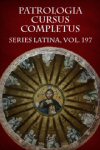
Patrologia Latina, vol. 197
- Editor: Jacques Paul Migne
- Series: Patrologiae Cursus Completus: Series Latina
Authors include*:
- Sancta Hildegardis Abbatissa
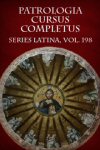
Patrologia Latina, vol. 198
- Editor: Jacques Paul Migne
- Series: Patrologiae Cursus Completus: Series Latina
Authors include*:
- Adamus Scotus Canonicus Regularis Ordinis Praemonstratensis
- Petrus Comestor.
- Godefridus Viterbiensis
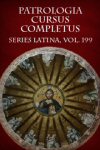
Patrologia Latina, vol. 199
- Editor: Jacques Paul Migne
- Series: Patrologiae Cursus Completus: Series Latina
Authors include*:
- Joannes Saresberiensis Carnot. Episc.
- Petrus S. R. E. Card.
- Guichardus Lugdun. Archiep.
- Gualterus Prior. S. Vict. Paris.
- Rogerus Abbas S. Evurt. Aurel.
- Joannes Cornubiensis
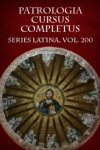
Patrologia Latina, vol. 200
- Editor: Jacques Paul Migne
- Series: Patrologiae Cursus Completus: Series Latina
Authors include*:
- Alexander III Pontifex Romanus
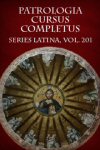
Patrologia Latina, vol. 201
- Editor: Jacques Paul Migne
- Series: Patrologiae Cursus Completus: Series Latina
Authors include*:
- Arnulfus Lexov. Episc.
- Guillemus Tyr.
- Lucius III Rom. Pont.
- Alanus Antiss. Episc.
- Aimericus Patriarcha Antioch.
- B. Petrus Claraevall. Abbas VIII
- Terricus Templarius
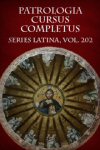
Patrologia Latina, vol. 202
- Editor: Jacques Paul Migne
- Series: Patrologiae Cursus Completus: Series Latina
Authors include*:
- Petrus Cellensis
- Urbanus III
- Gregorius VIII, Rom. Pont.
- Gilbertus Foliot, Londin. Episc.
- Robertus De Torinneio Abbas S. Michaelis in Periculo Maris.
- Joannes Belethus Theologus Paris.
- Hugo Eterianus
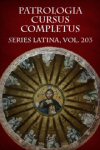
Patrologia Latina, vol. 203
- Editor: Jacques Paul Migne
- Series: Patrologiae Cursus Completus: Series Latina
Authors include*:
- D. Philippus de Harveng, Abbas Bonae Spei.
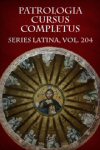
Patrologia Latina, vol. 204
- Editor: Jacques Paul Migne
- Series: Patrologiae Cursus Completus: Series Latina
Authors include*:
- Clemens III Pont. Rom.
- S. Stephanus Grandimont.
- Laborans
- Henricus de Castro Marsiaco, S. R. E. Card.
- Balduinus Cantuar. Archiep.
- Bernardus Abbas Fontis Calidi.
- Stephanus De Liciaco
- Petrus Bernardi
- Guillelmus de Trahinaco
- Gerardus Itherii, Grandimontenses.
- Reinerus
- Laurentius
- Monachi Leodienses.
- Ermengaudus.
- Henricus Septimellensis
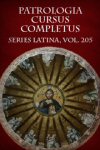
Patrologia Latina, vol. 205
- Editor: Jacques Paul Migne
- Series: Patrologiae Cursus Completus: Series Latina
Authors include*:
- Petrus Cantor.
- Mauricius de Sulliaco Paris.
- Garnerius Lingon.
- Geraldus Cadurc.
- Odo Tull.
- Alexander Gemmeticensis Abbas.
- Gaufridus Subprior Can. Regul.
- Matthaeus Vindocinensis
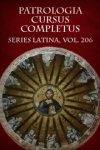
Patrologia Latina, vol. 206
- Editor: Jacques Paul Migne
- Series: Patrologiae Cursus Completus: Series Latina
Authors include*:
- Coelestinus III Pontifex Romanus
- Thomas Cisterciensis Monachus
- Joannes Algrinus S. R. E. Cardinalis
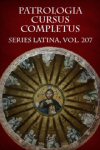
Patrologia Latina, vol. 207
- Editor: Jacques Paul Migne
- Series: Patrologiae Cursus Completus: Series Latina
Authors include*:
- Petrus Blesensis Bathoniensis in Anglia Archidiaconus
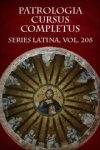
Patrologia Latina, vol. 208
- Editor: Jacques Paul Migne
- Series: Patrologiae Cursus Completus: Series Latina
Authors include*:
- S. Martinus Legionensis Presbyter
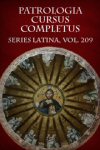
Patrologia Latina, vol. 209
- Editor: Jacques Paul Migne
- Series: Patrologiae Cursus Completus: Series Latina
Authors include*:
- S. Martinus Legionensis
- S. Wilhelmus Abbas S. Thom. de Paracl.
- Wilhelmus de Campania Rem.
- Joannes de Belmeis Lugdun.
- Balduinus Cp. Imp.
- Hugo V Abbas Cluniac.
- Elias de Coxida Abbas Dun.
- Thomas De Radolio.
- Gualterus de Castellione.
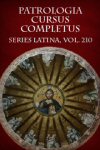
Patrologia Latina, vol. 210
- Editor: Jacques Paul Migne
- Series: Patrologiae Cursus Completus: Series Latina
Authors include*:
- Alanus de Insulis.
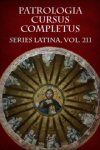
Patrologia Latina, vol. 211
- Editor: Jacques Paul Migne
- Series: Patrologiae Cursus Completus: Series Latina
Authors include*:
- Stephanus Tornacensis.
- Absalo Abbas Sprinckirsbacensis.
- Adamus Abbas Perseniae.
- Petrus Pictaviensis.
- Guibertus Gemblacensis Abbas.
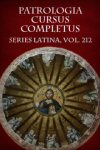
Patrologia Latina, vol. 212
- Editor: Jacques Paul Migne
- Series: Patrologiae Cursus Completus: Series Latina
Authors include*:
- Petrus de Riga et Aegidius Parisiensis
- Odo de Soliaco Parisiensis Episcopus
- Guntherus Cisterciensis Monachus
- Helinandus Frigidi Montis Monachus
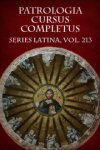
Patrologia Latina, vol. 213
- Editor: Jacques Paul Migne
- Series: Patrologiae Cursus Completus: Series Latina
Authors include*:
- Sicardus Cremonensis Episcopus
- Petrus Sarnensis
- Anonymi Saeculi XII
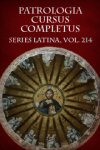
Patrologia Latina, vol. 214
- Editor: Jacques Paul Migne
- Series: Patrologiae Cursus Completus: Series Latina
Authors include*:
- Innocentius III Pontifex Romanus

Patrologia Latina, vol. 215
- Editor: Jacques Paul Migne
- Series: Patrologiae Cursus Completus: Series Latina
Authors include*:
- Innocentius III Pontifex Romanus
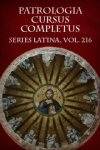
Patrologia Latina, vol. 216
- Editor: Jacques Paul Migne
- Series: Patrologiae Cursus Completus: Series Latina
Authors include*:
- Innocentius III Pontifex Romanus
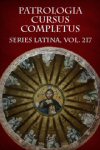
Patrologia Latina, vol. 217
- Editor: Jacques Paul Migne
- Series: Patrologiae Cursus Completus: Series Latina
Authors include*:
- Innocentius III Pontifex Romanus
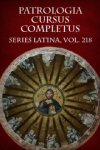
Patrologia Latina, vol. 218
- Editor: Jacques Paul Migne
- Series: Patrologiae Cursus Completus: Series Latina
Contains:
- Indices
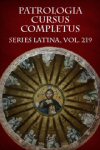
Patrologia Latina, vol. 219
- Editor: Jacques Paul Migne
- Series: Patrologiae Cursus Completus: Series Latina
Contains:
- Indices
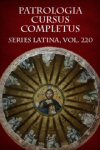
Patrologia Latina, vol. 220
- Editor: Jacques Paul Migne
- Series: Patrologiae Cursus Completus: Series Latina
Contains:
- Indices

Patrologia Latina, vol. 221
- Editor: Jacques Paul Migne
- Series: Patrologiae Cursus Completus: Series Latina
Contains:
- Indices
Jacques Paul Migne (1800–1875) was a notable priest and publisher in nineteenth-century France. He studied theology at Orleans, before becoming ordained in the diocese of Orleans in 1824. After publishing a controversial pamphlet, Migne was forced to leave his parish. He moved to Paris, where he founded the journal L’Univers religieux, which he edited until 1836.
In 1836, Migne founded a publishing company designed to distribute theological works cheaply for a wide audience. For nearly three decades, Migne published hundreds of volumes of Greek, Latin, and Syriac writings from the first 15 centuries of Christianity. He published continually until his publishing company was destroyed by fire in 1868, and his publishing was further hampered in 1870 by the Franco-German War. His enormous contribution to Patristics in the Patrologia Latina and Patrologia Graeca continues to be a standard among scholars today.
*Authors in each volume are listed and relfect the Latin text on the series title page of each PL volume. For instance, Saint Jerome is listed as S. Hieronymi. Some volumes contain additional authors and anonymous works.
Reviews
7 ratings
Danilo Scalia
3/10/2025
A remarkable collection of works whose value cannot be overstated. To make these invaluable treasures of our Christian history accessible to all, an innovative approach should be found. These works are of immeasurable worth for understanding our religious roots and are essential for the Logos platform. Their inclusion would not only further enrich the depth of Logos but also provide users with profound insights into our Christian traditions and theology.Noy Jan
8/1/2024
At least prioritizing a "reader version" roll-out of this and the other Patrologia series (Graeca and Syriaca/Orientalis) should - IMHO - be a top priority for a company that has branded versions of their software for the Orthodox and Catholic communities. Please, please like if you agree.
Daniel Caballero
3/9/2024

Alejandro Yarcho
12/16/2023
It's incredible that such an important work is not yet available for researchers. We can find people who have been waiting for years. Work like this must be supported and prioritized. So many books are supported; but this is a primary source. A wake-up call to Logos.Hermanni Pihlajamaa
9/18/2023

Timothy Gregory
8/23/2023
Sooooo excited about this collection! how much longer do we have to wait? is gathering interest mean that its almost ready?????? is there anything like a projected date of release available? or at least an estimate? Ego patientiter etsi cupidissime expecto has tomas!
Jared Barrenechea
9/17/2022